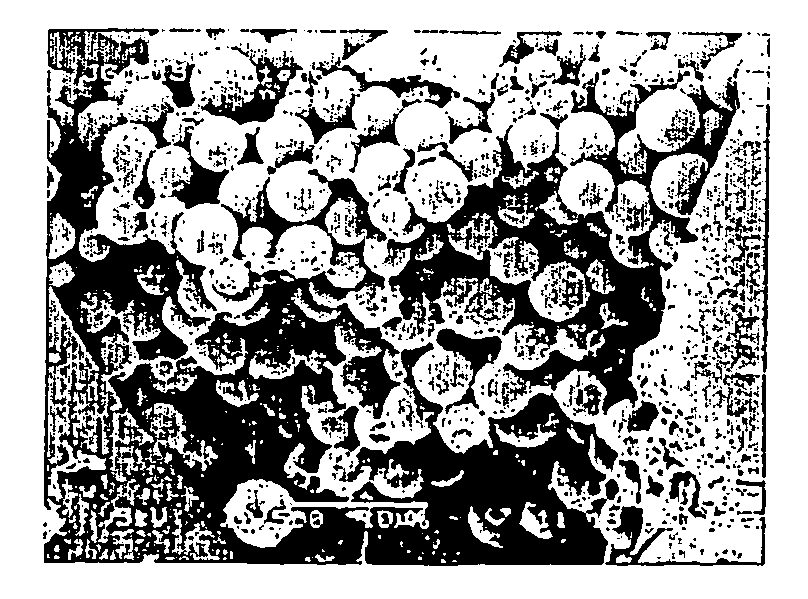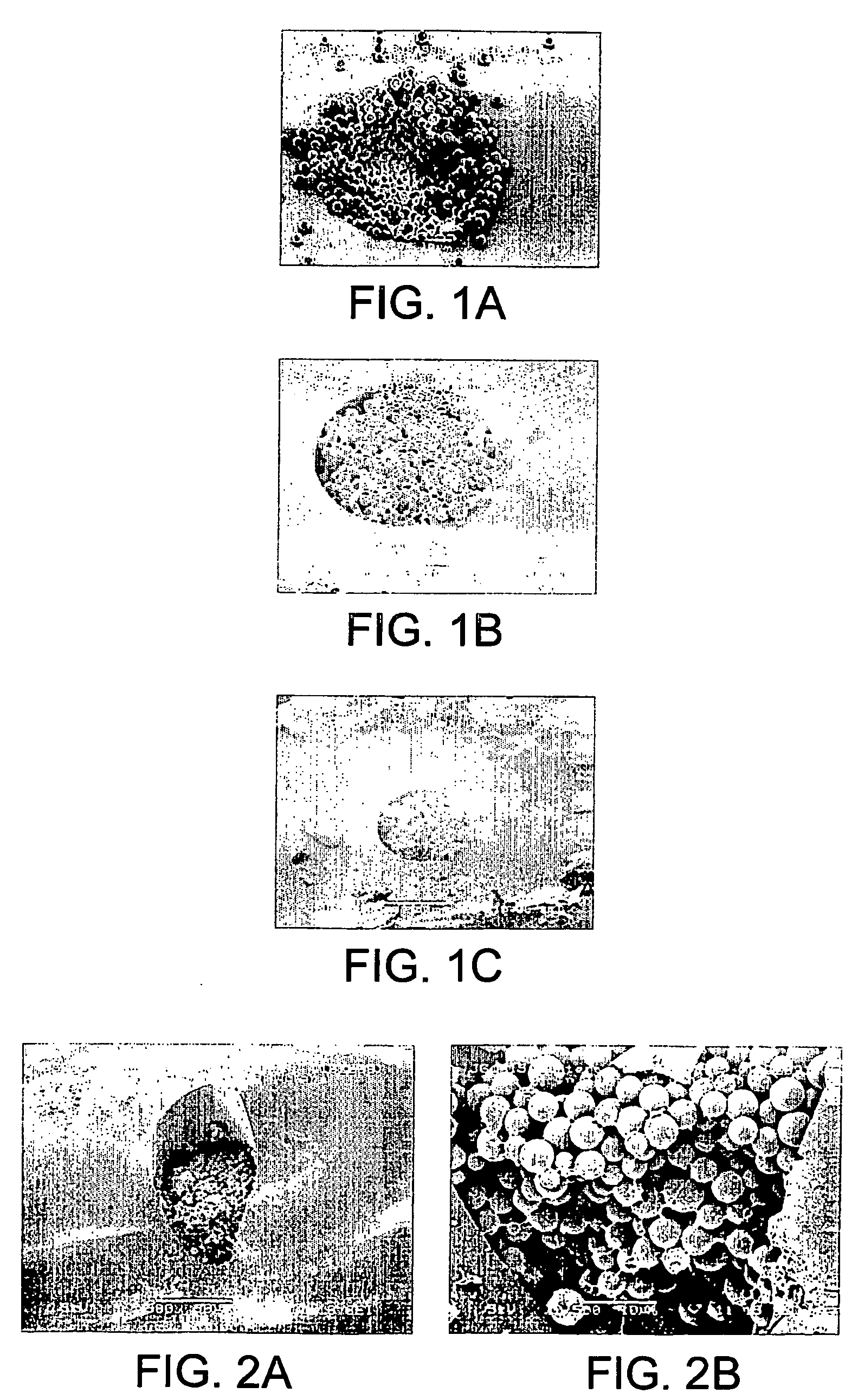Polymeric solid supports for chromatography nanocolumns
- Summary
- Abstract
- Description
- Claims
- Application Information
AI Technical Summary
Problems solved by technology
Method used
Image
Examples
example 1
of Column
[0115] Beds of 3.5 μm Symmetry C18 stationary phase material were chemically immobilized using poly(dimethylsiloxane) (PDMS) as a “nanoglue” to hold the particles together. A New Objective Integra frit column (75 μm fused silica capillary, New Objective, Inc., Woburn, Mass., USA) was packed using a 5 mg / mL of 3.5 μm Symmetry C18 particles (Waters Corporation, Milford, Mass., USA) in acetone. After packing to a bed length of 12 cm, the column was removed and allowed to dry under ambient conditions. The column was then carefully cut into three 4 cm lengths of packed capillary and the Integra frit (New Objective, Inc., Woburn, Mass., USA) was removed from the terminus of the last section. Three solutions of 1%, 5%, and 10% PDMS in 1,4-dioxane were prepared by sequentially adding the monomers of the two component PDMS Sylgard 184 kit (Dow Coming Corporation, Midland, Mich., USA) in a 10:1 monomer A:monomer B ratio. The three sections of packed capillary were then dipped in to o...
example 2
of Column
[0116] An alternative method to that of Example 1 includes a step of immediate sintering of a slurry of Symmetry C18 particles in a 5% PDMS solution, which had been drawn into the capillary. A 20 cm length of 75 μm i.d. fused silica capillary was dipped into a 100 mg / mL slurry of 3.5 μm Symmetry C18 material in 5% PDMS in ethyl acetate for 3 s. During this time 1 cm of the capillary was filled with slurry solution. The 1 cm section of the filled capillary was then placed into the resistive heating coil of an Innovatech frit making device (InnovaTech, Stevenage, Hertfordshire, United Kingdom), which was used to heat the area to about 350° C. Similar results may be achieved with a heated wire cutter or even with a lighted candle.
example 3
of Column
[0117] In yet another example, the slurry may be drawn into a capillary, the PDMS cured, and then sintered. A 20 cm length of 75 μm i.d. fused silica capillary was dipped into a 100 mg / mL slurry of 3.5 μm Symmetry C18 material in 5% PDMS in ethyl acetate. The capillary was allowed to dry in ambient conditions for 3 h, and was then placed in a 110° C. oven overnight. The following morning, the column frit was sintered in place using the Innovatech frit making device, discussed in Example 2. FIG. 2 presents two SEM images at magnifications of (A) 500 and (B) 2500 of a sintered PDMS frit prepared according to this example.
PUM
| Property | Measurement | Unit |
|---|---|---|
| Temperature | aaaaa | aaaaa |
| Temperature | aaaaa | aaaaa |
| Temperature | aaaaa | aaaaa |
Abstract
Description
Claims
Application Information
 Login to View More
Login to View More - R&D
- Intellectual Property
- Life Sciences
- Materials
- Tech Scout
- Unparalleled Data Quality
- Higher Quality Content
- 60% Fewer Hallucinations
Browse by: Latest US Patents, China's latest patents, Technical Efficacy Thesaurus, Application Domain, Technology Topic, Popular Technical Reports.
© 2025 PatSnap. All rights reserved.Legal|Privacy policy|Modern Slavery Act Transparency Statement|Sitemap|About US| Contact US: help@patsnap.com



